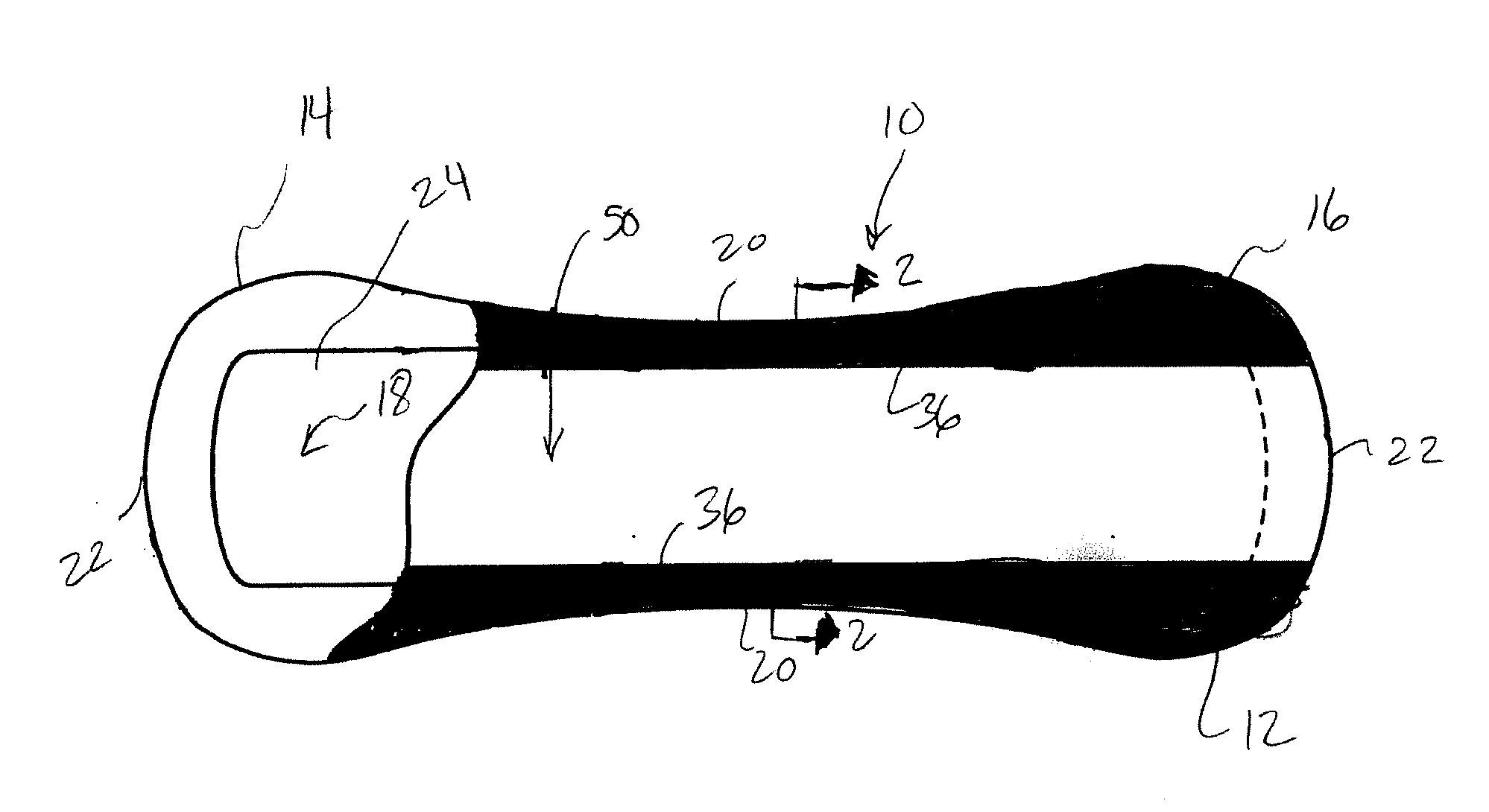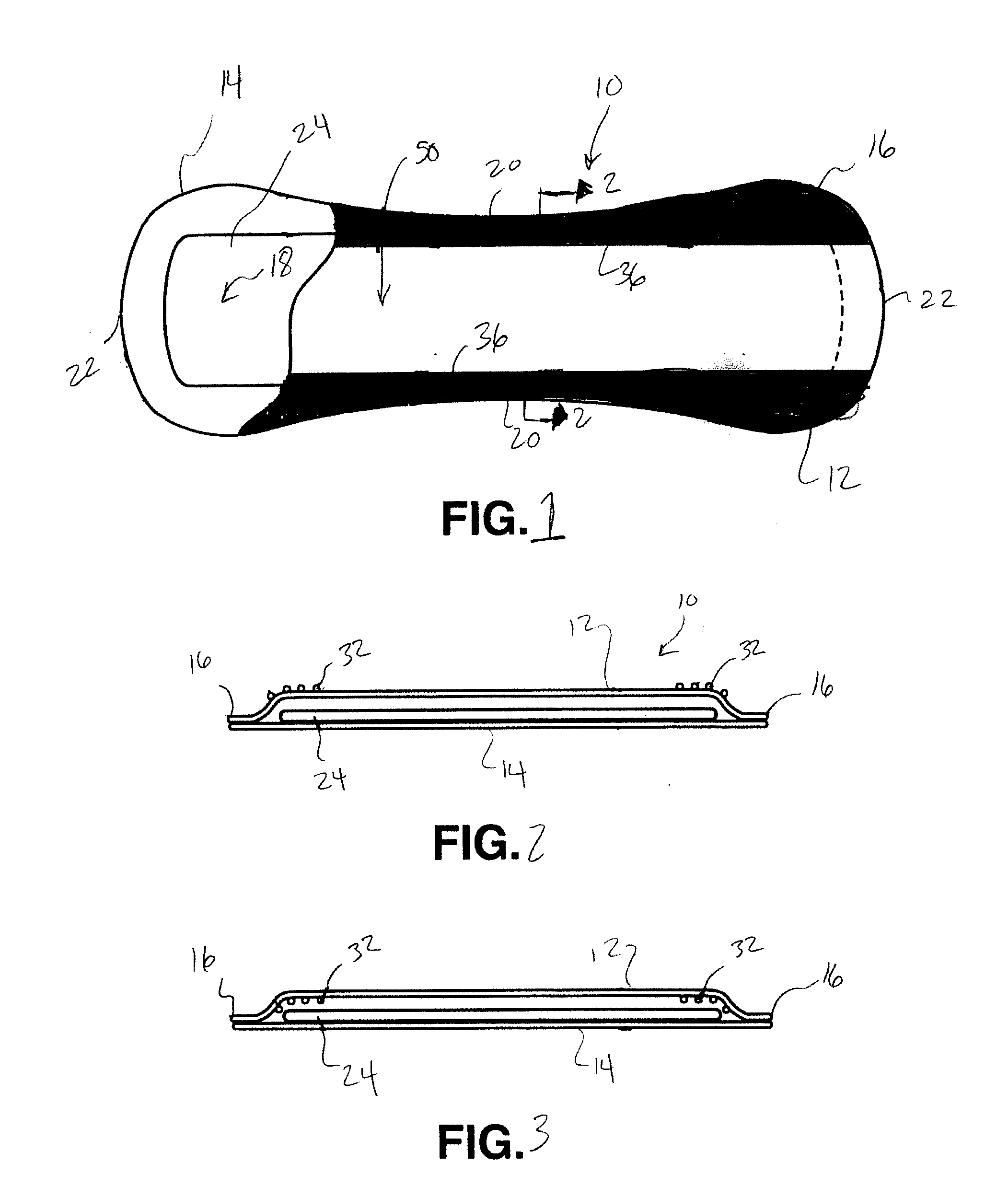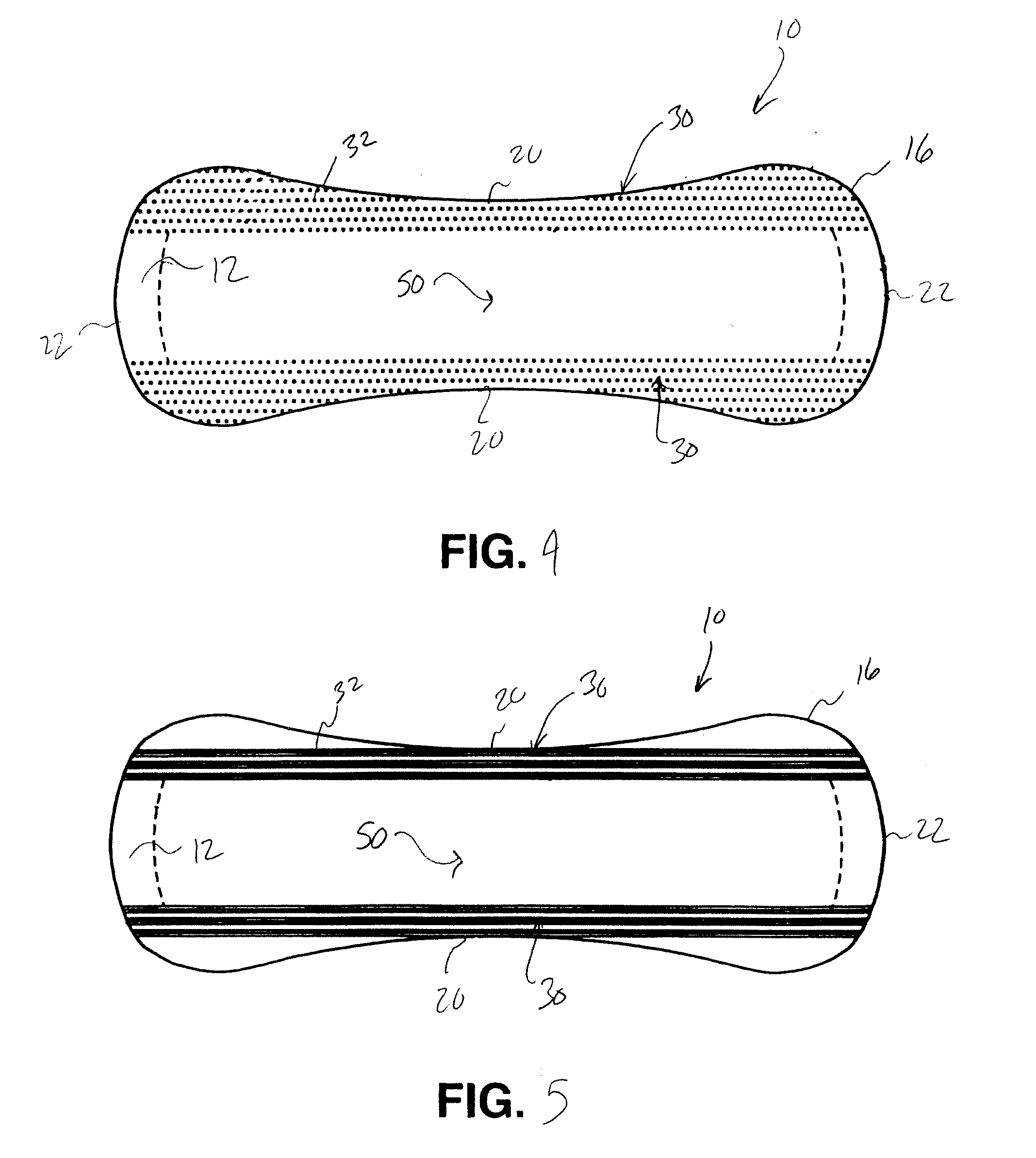Zoned application of decolorizing composition for use in absorbent articles
a composition and absorbent technology, applied in the field of ##feminine care absorbent articles, can solve the problems of general loss of confidence in the use of the articles, failure to completely eliminate the leakage problem, and embarrassment for consumers
- Summary
- Abstract
- Description
- Claims
- Application Information
AI Technical Summary
Problems solved by technology
Method used
Image
Examples
example 1
[0056]The ability of a decolorizing composition to discharge the color of blood was demonstrated. Microscope slides were coated with a mixture of linoleic acid, Surfynol™ 465 and water (ratio 1:0.01:1) and spread out by the use of a glass rod. A drop of blood (human) was placed onto each slide and spread out with the glass rod. The control slide was prepared by simply spreading out the drop of blood. The slides were placed in an incubator at 37° C. for one hour. The blood color was fully discharged on the experimental slides while no change in color was observed with the control slides.
example 2
[0057]The ability of a decolorizing composition to discharge the color of blood was demonstrated. Four feminine pads were used in a study. Control 1 (C1) just had two drops of human blood placed on the center of the pad. Control 2 (C2) had a light coating of Surfynol™ 465 in water (0.25 ml in 0.5 ml water) placed on the center of the pad followed by two drops of human blood. Experimental pad 1 (E1) had a mixture of linoleic acid and surfactant (0.25 ml surfactant and 0.50 ml of linoleic acid) followed by two drops of human blood. Experimental pad 2 (E2) had a mixture of linoleic acid and surfactant (0.50 ml of surfactant and 0.50 ml of linoleic acid) applied to the center of the pad followed by two drops of human blood. The pads were placed in an incubator at 37° C. and observed. Within minutes the red color of the blood on pads E1 and E2 had turned brown and continued to fade with time. At the end of the experiment the blood color on pads E1 and E2 had been fully discharged, leavin...
example 3
[0058]The ability of a decolorizing composition to discharge the color of blood was demonstrated. Using 4″×5″ sample of cotton, satin, polyester and light-weight Lycra were used in a study where blood (20 μl) or menses (50 μl) was placed onto the center of the fabric samples to mimic a stain situation. To determine potential efficacy of stain removal, 200 μl of a control solution (Surfynol™ 465 surfactant as a 2% wt / wt solution in water) or 200 μl of surfactant solution containing linoleic acid as the stain removal active (1:2 ratio of 2% surfactant solution to linoleic acid) were applied to the area soiled by blood or menses. The samples were then placed in an incubator at 37° C. and the color change visually monitored. It is clear that the intense menses color had abated using the identified technology.
PUM
 Login to View More
Login to View More Abstract
Description
Claims
Application Information
 Login to View More
Login to View More - R&D
- Intellectual Property
- Life Sciences
- Materials
- Tech Scout
- Unparalleled Data Quality
- Higher Quality Content
- 60% Fewer Hallucinations
Browse by: Latest US Patents, China's latest patents, Technical Efficacy Thesaurus, Application Domain, Technology Topic, Popular Technical Reports.
© 2025 PatSnap. All rights reserved.Legal|Privacy policy|Modern Slavery Act Transparency Statement|Sitemap|About US| Contact US: help@patsnap.com



